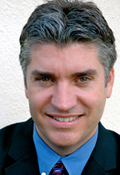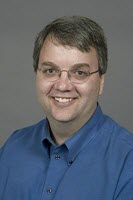FRONTLINE AND PROPUBLICA EXAMINE FORENSIC SCIENCE IN THE COURTROOM
FRONTLINE Presents
“THE REAL CSI”
Tuesday, April 17, 2012, at 10 P.M. ET on PBS
www.pbs.org/frontline/real-csi
Evidence collected at crime scenes—everything from fingerprints to bite marks—is routinely called upon in the courtroom to prosecute the most difficult crimes and put the guilty behind bars. And though glamorized on commercial television, in the real world, it’s not so cut-and-dried. A joint investigation by FRONTLINE, ProPublica and the Investigative Reporting Program at UC Berkeley examines the reliability of the science behind forensics in “The Real CSI,” airing Tuesday, April 17, 2012, at 10 P.M. ET on PBS (check local listings).
FRONTLINE correspondent Lowell Bergman finds serious flaws in some of the best known tools of forensic science and wide inconsistencies in how forensic evidence is presented in the courtroom. From the sensational murder trial of Casey Anthony to the credentialing of forensic experts, Bergman documents how a field with few uniform standards and unproven science can undermine the search for justice.
The investigation follows a landmark study by the National Academy of Sciences that called into question the tenets of forensic science. For the first time, Harry T. Edwards, a senior federal appellate court judge and co-chairman of the report, sits for an interview to discuss what the report means. He tells FRONTLINE that these television dramas often exaggerate or misrepresent the reliability of forensic evidence, including one of the most called-upon of the forensic techniques, fingerprint identification.
“If what some people are saying, it works because we’ve gotten convictions, … that’s not proof that the discipline is undergirded by serious science,” Edwards tells FRONTLINE. “It’s been inaccurate and wrong for many years. It doesn’t become better because it’s many years. It’s just many years of doing it incorrectly. … And the stakes are too high. When you’re talking about prosecution, incarceration, the stakes are too high.”
In this hour, FRONTLINE examines one of the most high-profile terrorist investigations since 9/11: the case of Brandon Mayfield, an attorney who was wrongfully identified and arrested as a suspect in the Madrid commuter train bombings after the FBI erroneously matched his fingerprint to a partial print found at the scene. The case exposed the weaknesses of fingerprint identification, causing the FBI to change the way its examiners testify about the reliability of forensic fingerprinting. Bergman interviews the fingerprint expert selected by Mayfield’s defense, the independent examiner Ken Moses, who concluded it was a positive match for Mayfield, but later admits that he and the three other examiners who looked at the prints were wrong. The Mayfield case highlights the weak link in fingerprint analysis—the examiner, whose work is not done by a computer, as seen on TV, and can be influenced by unconscious bias.
The reporting reveals that bite-mark identification is another one of several seriously flawed forensic tools used in criminal investigations. “What we’re talking about with forensic science is systemic failure,” Innocence Project co-founder Peter Neufeld tells Bergman. “We’re talking about using techniques, using equipment that’s never been validated scientifically.”
In the small town of Brooksville, Miss., FRONTLINE explores the errors that led to the convictions of two innocent men, whose convictions in part were based on faulty bite-mark testimony. “There have been a number of people who were convicted based on bite-mark testimony, who were sent to death row or sent to prison for life,” says Neufeld. “And in each of those cases, a whole group of forensic odontologists, or dentists, said they were absolutely certain that this was the guy, … and they were absolutely wrong.”
Nowhere in recent history has forensic evidence been more prominent than in the trial of Casey Anthony, who was acquitted of the first-degree murder of her 2-year-old daughter, Caylee Anthony. Based on a smell from the trunk of Casey Anthony’s car and using an expert in “the odor of the dead,” the prosecution set out to convince the jury that the stench was that of a decaying body. In total, 37 expert witnesses from more than a dozen areas of forensics testified, with the defense challenging with forensic experts of their own. “This case utilized every single type of forensic science. … They threw a bunch of stuff against the wall, and they were hoping something would stick, and none of it did,” says defense lawyer Jose Baez.



















Is blood splatter a “good” science ?
FROM
http://law2.umkc.edu/faculty/projects/ftrials/sheppard/sheppardaccount.html
»The new twist in the prosecution’s case came when Spellacy questioned Mary Cowan about blood spots found on Sam Sheppard’s watch. Cowan testified that a couple of blood spots on the rim of the watch were blood splatter–the product of flying blood–that could, presumably, only have been there if Sam were the murderer. With Cowan’s potentially devastating testimony, the state rested its case.
F. Lee Bailey, fortunately for his client, had a counter to Cowan’s powerful testimony. Bailey had his forensic expert Dr. Paul Kirk examine color photographs of the watches. On the stand, Bailey asked Kirk about the blood found on the watch. Kirk testified, “For the most part it looks like contact transfer.” Kirk conceded that the tadpole-shaped spots along the watch’s rim suggested flying blood, but said the “lack of a symmetrical tail” left the issue in “doubt.” Bailey saved his trump card on the watch evidence for a prosecution rebuttal witness, blood expert Roger Masters. Bailey projected large pictures of the watch, then pointed to two small spots on the inside of the band that appeared to resemble the blood spots on the rim that Mary Cowan had confidently concluded were the result of flying blood. Bailey asked Marsters if he had noticed the spots in question. “No, I honestly can’t say that I did,” Marsters replied.«
In my view, “blood spatter” ranks right down there with “bite marks”. There have been attempts by people in the field to “dress it up” as science, but it’s just a “pig in a tuxedo”. I anticipate doing a future post on this. And there is even more from the Sheppard case.